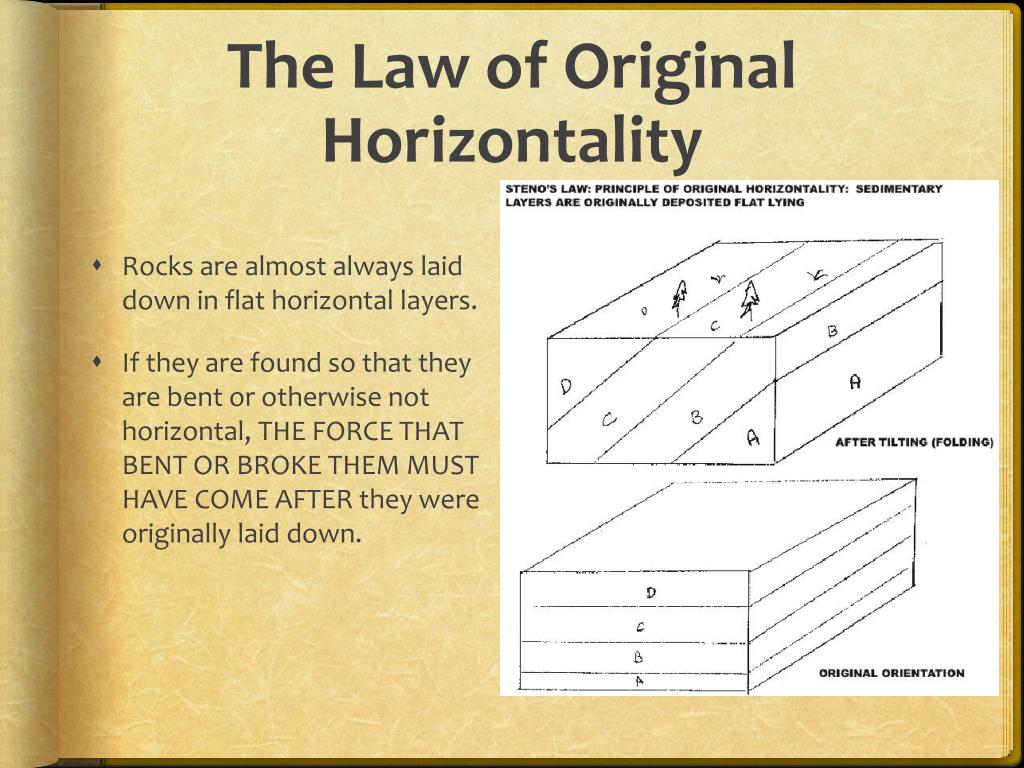
To illustrate the practical applications of superposition in scientific inquiry, sedimentary rock that has not been deformed by more than 90° will exhibit the oldest layers on the bottom, thus enabling paleontologists and paleobotanists to identify the relative ages of any fossils found within the strata, with the remains of the most archaic lifeforms confined to the lowest. This is paramount to stratigraphic dating, which requires a set of assumptions, including that the law of superposition holds true and that an object cannot be older than the materials of which it is composed. In its plainest form, it states that in undeformed stratigraphic sequences, the oldest strata will lie at the bottom of the sequence, while newer material stacks upon the surface to form new deposits over time. The law of superposition is an axiom that forms one of the bases of the sciences of geology, archaeology, and other fields pertaining to geological stratigraphy.

Also, sedimentary beds may pinch out along strike, implying that slight angles existed during their deposition. Similarly, sediments may drape over a pre-existing inclined surface: these sediments are usually deposited conformably to the pre-existing surface. This is known as the angle of repose, and a prime example is the surface of sand dunes.

For instance, coarser grained sediments such as sand may be deposited at angles of up to 15 degrees, held up by the internal friction between grains which prevents them slumping to a lower angle without additional reworking or effort. However, it is now known that not all sedimentary layers are deposited purely horizontally. Īs one of Steno's Laws, the principle of original horizontality served well in the nascent days of geological science. Picture from Glen Canyon National Recreation Area, Utah.įrom these observations is derived the conclusion that the Earth has not been static and that great forces have been at work over long periods of time, further leading to the conclusions of the science of plate tectonics that movement and collisions of large plates of the Earth's crust is the cause of folded strata.

From top to bottom: Rounded tan domes of the Navajo Sandstone, layered red Kayenta Formation, cliff-forming, vertically jointed, red Wingate Sandstone, slope-forming, purplish Chinle Formation, layered, lighter-red Moenkopi Formation, and white, layered Cutler Formation sandstone. These strata make up much of the famous prominent rock formations in widely spaced protected areas such as Capitol Reef National Park and Canyonlands National Park. The Permian through Jurassic stratigraphy of the Colorado Plateau area of southeastern Utah is a great example of Original Horizontality. It was first proposed by the Danish geological pioneer Nicholas Steno (1638–1686). The principle is important to the analysis of folded and tilted strata. The principle of original horizontality states that layers of sediment are originally deposited horizontally under the action of gravity.


 0 kommentar(er)
0 kommentar(er)
